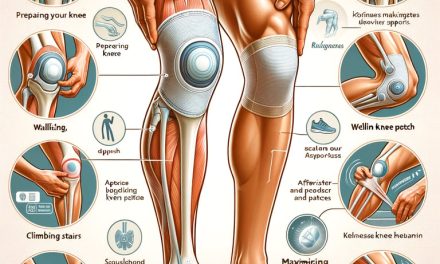Table Of Contents:
- Strategies for Enhancing Online Wellbeing
- Key Takeaways
- Setting Healthy Digital Boundaries
- Identify Your Online Time Triggers
- Schedule Regular Digital Detox Sessions
- Create Designated Tech-Free Zones
- Understand the Impact of Your Online Presence
- Cultivating a Positive Online Environment
- Choose Uplifting and Educative Content
- Engage in Positive Online Communities
- Share Content That Inspires Well-Being
- Use Tools to Block Negative Content Sources
- Practical Tips for Online Privacy Protection
- Regularly Update Your Privacy Settings
- Be Cautious With Personal Information Sharing
- Educate Yourself on Phishing and Scams
- Use Secure and Trusted Websites
- Managing Screen Time for Better Sleep
- Implement a Screen-Time Curfew Before Bed
- Diminish Blue Light Exposure in the Evening
- Use Technology to Monitor Your Sleep Patterns
- Encouraging Social Connections Without Overwhelm
- Prioritize Meaningful Online Interactions
- Limit Your Time on Social Media
- Engage in Real-Life Activities and Conversations
- Enhancing Mental Health Through Online Resources
- Utilize Online Therapy and Counseling Sessions
- Explore Mindfulness and Meditation Apps
- Join Support Groups and Forums for Shared Experiences
- Conclusion
Strategies for Enhancing Online Wellbeing
In the ever-expanding knowledge economy, maintaining our wellbeing is as crucial as living vigorously in the physical world. With the average employee spending a significant chunk of their waking hours in digital spaces, establishing healthy digital boundaries is integral to balancing life and work. As a caregiver or individual focused on mental health, understanding how to navigate online environments can profoundly impact overall well-being. In this piece, I’ll share actionable insights to fortify your online well-being, equipping you with the savvy to thrive in the virtual terrain. Keep reading to transform your digital habits into a force for good health and positive connection.
Key Takeaways
- Technology impacts daily life but balance is necessary for mental health
- Scheduled digital detox improves work and personal life balance
- Designated tech-free zones at home encourage mental rejuvenation
- Engaging with online communities should be intentional and value-based
- Protecting digital security is as important as mental well-being
Setting Healthy Digital Boundaries

Recognizing the impact of technology on our daily lives, I’ve committed to collaborating with a mental health professional to develop sustainable strategies for maintaining a healthy balance. As I navigate the interconnected world of tech and wellness, I’ve pinpointed specific habits that draw me into excessive online time. With a deliberate approach, I’ve learned to carve out moments for digital detox, aligning them with my need for a mental reset. My home now includes spaces utterly devoid of digital distractions, reinforcing the importance of face-to-face interactions and physical fitness. As I tread thoughtfully through the digital landscape, I’ve become increasingly cognizant of the ripple effect my digital footprint has on my company, my community, and beyond. Rather than letting an algorithm dictate my daily rhythm, I ensure that my engagement with platforms, be it social media or javascript-laden websites, is intentional and reflective of my values. This journey towards digital wellbeing is not about abstention but about forging a path that embraces technology without allowing it to overshadow our human connections and personal growth.
Identify Your Online Time Triggers
In my conversations with a health professional, the significance of recognizing individual triggers that lead to excessive online engagement became abundantly clear. As a student, I observed my inclination to surf the web intensifies during periods of academic pressure, a behavior mirrored in the workplace among employees striving to meet project deadlines. My organization now prioritizes the assessment and understanding of these catalysts, helping us create a work environment that supports digital wellbeing for all team members.
Schedule Regular Digital Detox Sessions
Integrating scheduled digital detox periods into my routine has had a transformative impact on both my work and personal life. Acknowledging the sheer accessibility of technology, I established predetermined times where I step back and disconnect, allowing me to re-engage with my surroundings and tend to my health without the constant buzz of notifications. The experience has ingrained a sense of balance, revealing the genuine value of being present and proactive in maintaining my wellbeing.
| Weekday | Detox Start | Detox End | Activities |
|---|---|---|---|
| Monday | 7 PM | 9 PM | Reading, Yoga |
| Wednesday | 6 PM | 8 PM | Family Game Night |
| Friday | 8 PM | 10 PM | Outdoor Walk, Meditation |
Create Designated Tech-Free Zones
My conversation with a Beyond Blue counselor underscored the necessity of designating areas in my home and workplace where energy is not sapped by digital devices. As a teacher who often engages with students via online chat, I’ve now established specific rooms where the compass of my attention points away from screens, allowing for rejuvenation of the mind and spirit. These zones serve as harbors for uninterrupted thought, where the essence of presence is cultivated away from the digital pull.
Understand the Impact of Your Online Presence
Embracing the concept of continuous learning is at the heart of understanding my online presence. Each status update, comment, or share carries the weight of my digital identity, influencing the mood and perceptions of my network. Mindful of the information I broadcast, my goal is to foster a virtual environment conducive to the well-being of others, allowing space for breathing and positive engagement.
As we navigate the intricacies of our online lives, stepping away from the screen is just the beginning. Let’s shift our focus from the boundaries we draw, to the vibrant spaces we can create.
Cultivating a Positive Online Environment

My journey into enhancing wellbeing doesn’t stop at setting boundaries; it extends into the very fabric of the digital content I consume. Employing psychology‘s teachings in online environments, I act not just as a user but as a manager of my digital experience, consciously selecting content that uplifts and educates. This practice reinforces my confidence and supports my broader wellness goals. Exemplifying leadership in the digital realm, I actively participate in and contribute to online communities that promote positivity. Recognizing my responsibility to uplift others, I share content that steers conversations toward well-being. Additionally, I’ve found solace in utilizing tools designed to block sources of negativity, ensuring my online space remains conducive to growth and supportive of a healthy mindset.
Choose Uplifting and Educative Content
My commitment to enhancing the online wellbeing of my audience has led me to be selective with the material I engage with and share. I thoughtfully curate content that not only enriches the language we use but also empowers employees within the workforce, promoting a culture of learning and healthy communication. Whether it’s sharing a well-composed piece of music that brightens the day or an insightful article on navigating substance abuse, my focus is on providing resources that truly benefit and enlighten my community.
Engage in Positive Online Communities
As I venture further into the realm of virtual communities, I prioritize those that emphasize productivity, optimal management practices, and the holistic concept of health and wellbeing. In these online groups, I find not only a reservoir of resources for professional growth but also a sanctuary that values relaxation and mental wellbeing. Immersed in such forums, I gather and contribute insights that serve both my personal development and the broader community.
| Community Name | Focus Area | Personal Benefit | Contribution |
|---|---|---|---|
| Healthy Habits Haven | Mental Wellbeing | Stress Management Techniques | Weekly Wellness Tips |
| Prod-Masters Collective | Productivity | Time-Management Skills | Productivity Tools Reviews |
| Relaxation Room | Relaxation | Guided Meditation Practices | Relaxation Playlists |
Share Content That Inspires Well-Being
In my role overseeing a team that predominantly engages in remote work, I consider it my responsibility to guide behavior in the online space through example and mentorship. Managers, with their influential positions, possess the toolkit to mold the digital office culture. By sharing content that reflects a commitment to wellbeing, leaders like myself can instill values that resonate across remote teams, laying the groundwork for a supportive work environment:
| Type of Content | Purpose | Benefit to Remote Work | Role in Mentorship |
|---|---|---|---|
| Interactive Wellbeing Workshops | Boost team morale | Encourages work-life balance | Shows commitment to employee health |
| Inspirational Success Stories | Motivate personal growth | Promotes a positive outlook | Provides relatable role models |
| Productivity Apps and Tools | Improve efficiency | Fosters better time management | Offers practical solutions to common challenges |
Use Tools to Block Negative Content Sources
My mind requires a learning environment that’s conducive to growth, free from the clutter of negativity that can distract from my focus on personal development activities, such as volunteer work and meditation. I actively employ digital tools and filters that allow me to direct my attention away from harmful content, enhancing my ability to engage productively and maintain a serene online space.
Creating a welcoming space online paves the way for us to discuss another critical aspect of our virtual lives: safeguarding our personal information. Let’s shift our focus to practical measures you can take to fortify your online privacy.
Practical Tips for Online Privacy Protection

Maintaining my online wellbeing extends beyond mental health and spills over into the realm of digital security—critical in protecting aspects like employment data, therapy sessions, and personal yoga schedules from unwanted exposure. I take strides to regularly refresh my privacy settings, a practice as habitual as my engagement with work and leisure activities online. Sharing personal information has become a methodical process, where caution is at the forefront to shield against vulnerabilities. My proactive approach has also led me to invest time in educating myself about phishing schemes and scams, fortifying my defenses against deceit. Whether I’m browsing for new mental health resources or seeking secure platforms for my interactions, I consistently prioritize the use of trusted websites, imbuing my digital experience with peace of mind.
Regularly Update Your Privacy Settings
Adopting a habit akin to a regular exercise regimen, I make it a point to update my online privacy settings consistently. This act, which I now equate to a critical skill in the digital age, is as automatic as locking the physical doors of my home. Through continuous education on the latest security practices, I fortify my digital presence against intrusions, ensuring my personal information remains under my control.
Be Cautious With Personal Information Sharing
In my discussions with cybersecurity experts, I’ve adopted a mindful approach to what personal details I share online, reducing stress associated with the potential misuse of my information. Being selective about the times I disclose facets of my life, such as sleep patterns in health apps or my engagement with photography as a hobby, allows for constructive feedback from trusted sources without compromising my privacy.
Educate Yourself on Phishing and Scams
My stance on cybersecurity is proactive; I soak up tips with fervor, recognizing that being well-informed is a life armor in the digital age. Through online courses and community forums, I refine my ability to distinguish legitimate emails from phishing attempts keen on plundering sensitive data. This acquired knowledge builds a culture of vigilance in my personal and professional networks, ensuring that scams find no fertile ground to take root.
Use Secure and Trusted Websites
My dedication to maintaining a healthy brain and overall physical health extends to the vigilant use of secure and trusted websites, steeped in thorough research and recommendations. Retaining focus on the integrity of the content, I actively seek out platforms known for their credibility, whether I’m delving into the latest health studies or listening to a podcast on well-being. Such prudence ensures that my digital footprint aligns with the values of security and trust.
- Thoroughly vet websites before engaging in any exchange of information.
- Regularly consult trusted sources for updates on secure platforms.
- Commit to only using websites with strong reputations for protecting user data.
- Research and listen to podcasts that prioritize online security in their discussions.
Securing your online presence is just the beginning; taking control of your screen time could transform your sleep quality. Let’s shift focus and discover how smart screen habits lead to restful nights.
Managing Screen Time for Better Sleep

Acknowledging the nuanced relationship between screen time and sleep has dramatically impacted my overall wellbeing. In my continuous quest to combat anxiety and elevate happiness within my life and the employee experience within my company, I’ve turned the conversation towards actionable sleep hygiene practices. I’m keen on introducing a screen-time curfew well before bed, curbing both fear and restlessness that often accompany late-night scrolling. Minimizing blue light exposure during evening hours is another focused change I’ve embraced—it’s a small adjustment with profound benefits. Additionally, I utilize technology designed to track and analyze sleep patterns, affording me insights that lead to remarkably more restful nights. These deliberate steps, grounded in a judicious use of technology, support the creation of a serene environment conducive to high-quality sleep.
Implement a Screen-Time Curfew Before Bed
Each night, as the clock strikes eight, I commence my screen-time curfew, powering down devices to escort in a period of tranquility. This personal policy is a cornerstone of my nightly ritual, fostering an atmosphere where sleep ushers in naturally, undisturbed by the artificial glow of screens.
Diminish Blue Light Exposure in the Evening
In the quiet hours as day gives way to night, I actively decrease my exposure to blue light by setting devices to warmer display settings and shutting off electronic screens. This simple change aids my body’s natural progression toward rest, allowing for a deep, undisturbed slumber that is essential for my daily vitality and performance.
Use Technology to Monitor Your Sleep Patterns
Incorporating sleep tracking technology into my bedtime routine has delivered insightful data, enabling me to adjust my habits for optimal rest. Wearing a sleep tracker, I am now privy to patterns and behaviours that I can tweak, ensuring that my sleep quality improves over time and serves as a solid foundation for my day-to-day well-being.
Balancing screen time has cleared the way for restful slumber. Let’s shift our focus to fostering social ties that enrich, not exhaust, our lives.
Encouraging Social Connections Without Overwhelm

As I nurture my digital wellbeing, striking a balance between maintaining social connections and mitigating online fatigue has evolved into a central focus. It’s tempting to be constantly plugged in, checking updates, and engaging in a relentless flow of digital chatter. Yet I’ve discovered that prioritizing enriching online conversations over quantity leads to more meaningful exchanges. Cognizant of the toll that endless scrolling can take on my mental state, I now set limits on the time I spend interacting with social media platforms, ensuring that virtual connections don’t encroach on my non-digital life. By consciously choosing to partake in real-world activities and fostering in-person dialogues, I strengthen my relationships and enhance the quality of my social experiences, without succumbing to the overwhelm of hyperconnectivity.
Prioritize Meaningful Online Interactions
In my effort to cultivate a healthier digital ecosystem, I’ve adopted a selective approach when engaging online, reserving my time for discussions that are not just reactive, but thoughtful and consequential. Such conversations are not about the number of likes or shares, but the depth and the impact they have on both my well-being and that of my peers, creating connections that transcend digital barriers.
Limit Your Time on Social Media
Mindfully managing my time on social media has become a crucial practice. I set specific, daily time limits for engaging with these platforms, reserving their usage for periods when I can be fully present and interact with intent. This disciplined approach not only frees up time for offline pursuits but also safeguards me against the stress of constant digital noise.
Engage in Real-Life Activities and Conversations
Finding fulfillment in face-to-face conversations, I actively seek out opportunities for personal interaction, whether it’s a coffee meet-up with a colleague or a community workshop. These real-life engagements are the cornerstones of my social wellbeing, effectively anchoring my sense of community and belonging outside the digital realm.
- Scheduling regular coffee dates with peers to foster genuine connections.
- Attending local events and workshops that align with my interests, enhancing my network.
- Initiating volunteer opportunities that encourage teamwork and offline engagement.
Transitioning from the realm of social engagement, we now focus on fortifying our mental well-being. Discover a world of online resources designed to support and uplift your psychological resilience.
Enhancing Mental Health Through Online Resources

In my commitment to fostering robust mental health within the digital sphere, I’ve explored the potential of various online modalities that offer support and enhancement of wellbeing. Engaging with a therapist through digital sessions has provided me with tailored guidance, while mindfulness and meditation apps have supplemented my daily routine with moments of tranquility and introspection. I’ve also discovered the power of connection through online support groups and forums, where shared experiences become a source of comfort and strength. These resources stand as pillars in my journey, signifying my proactive stance in utilizing the internet as a tool for personal development and emotional resilience.
Utilize Online Therapy and Counseling Sessions
Seeking support for mental health can often feel like a daunting prospect, yet the option of online therapy has stripped away many barriers, allowing me to access professional counseling with practical ease. Engaging regularly with a licensed therapist via video calls, I receive personalized strategies and compassionate guidance, which have become instrumental in my journey towards self-improvement and emotional wellbeing:
| Day | Time | Session Focus | Post-Session Activity |
|---|---|---|---|
| Tuesday | 5 PM | Managing Work-Related Stress | Reflective Journaling |
| Thursday | 6:30 PM | Improving Personal Relationships | Communication Practice with Partner |
| Saturday | 10 AM | Building Self-Esteem | Participating in a Self-Care Routine |
Explore Mindfulness and Meditation Apps
Integrating mindfulness and meditation apps into my daily routine has reinforced my mental health regimen, offering a personalized touch to stress reduction and emotional regulation. These practical tools, accessible on my smartphone or tablet, provide a variety of guided sessions that cater to my individual needs and schedule, infusing my days with calm and balance.
| App Name | Key Features | Usage Frequency | Personal Impact |
|---|---|---|---|
| TranquilTide | Guided meditations, Sleep stories | Daily | Improved sleep quality |
| Mindful Moments | Short, calming exercises for breaks | Several times a week | Reduced workday stress |
| SolaceSpace | Breathing techniques, Mood tracking | As needed | Enhanced emotional awareness |
Join Support Groups and Forums for Shared Experiences
Participating in online support groups and forums has been an unexpectedly profound addition to my journey in safeguarding my mental health. In these virtual spaces, I’ve found solace in the collective wisdom and fellowship of those with shared life experiences, each striving towards healing, empowering not just themselves but every member who joins in the conversation.
Conclusion
Adopting strategies for online wellbeing allows individuals to intentionally use technology, reinforcing the value of meaningful human connections and personal growth amidst the digital fray. By establishing digital boundaries, engaging with uplifting content, and utilizing mental health resources, we create a supportive online ecosystem that enhances both our work and personal lives. Regular updates to privacy settings and cautious information sharing bolster security, instilling confidence as we navigate the online world. Ultimately, these practices support a balanced digital lifestyle, contributing to our overall health and fostering a sense of purpose and well-being.





